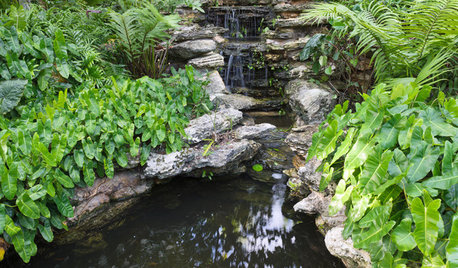Growing Monstera deliciosa Liebm / Split Leaf Philodendron
sjcfnp
14 years ago
Related Stories

DECORATING GUIDESConjure a Jungle in a Pot
Sprawling, climbing and with primitive-looking leaves, philodendrons bring untamed beauty to even the most civilized homes
Full Story
GREENBotanical Green, Meant to Be Seen
Learn how to cultivate this vibrant yet restful color in your home, using its hues to set the mood for any space
Full Story
LANDSCAPE DESIGNRecipe for Tropical Edible Garden Style
Appeal to exotic good taste with fruit trees, palms and tropical look-alikes in your temperate-climate garden
Full Story
DECORATING GUIDES10 Ways to Give Your Hospitality a Tropical Touch
Treat guests to the resort treatment with blossoms, fruit and artwork that stir up an air of the exotic
Full Story





exoticrainforest
sjcfnpOriginal Author
Related Professionals
Forest Acres Landscape Architects & Landscape Designers · Kenmore Landscape Architects & Landscape Designers · Salisbury Landscape Architects & Landscape Designers · Biloxi Landscape Contractors · Englewood Landscape Contractors · Hendersonville Landscape Contractors · The Villages Landscape Contractors · The Crossings General Contractors · Ames General Contractors · Palestine General Contractors · Westminster General Contractors · Bronx Siding & Exteriors · Hacienda Heights Siding & Exteriors · Orland Park Siding & Exteriors · Philadelphia Siding & ExteriorssjcfnpOriginal Author
dellis326 (Danny)
exoticrainforest
sjcfnpOriginal Author